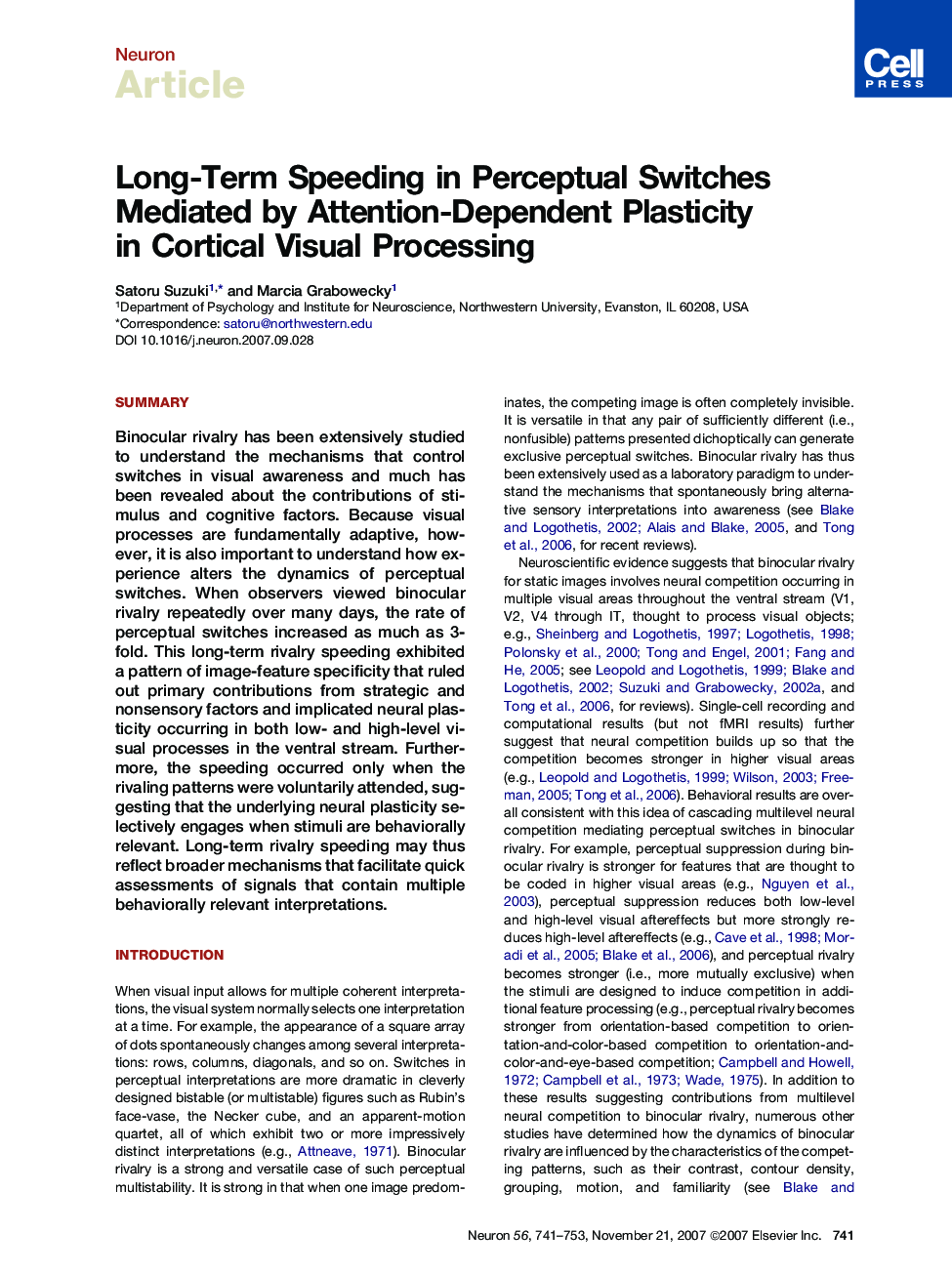| Article ID | Journal | Published Year | Pages | File Type |
|---|---|---|---|---|
| 4322544 | Neuron | 2007 | 13 Pages |
SummaryBinocular rivalry has been extensively studied to understand the mechanisms that control switches in visual awareness and much has been revealed about the contributions of stimulus and cognitive factors. Because visual processes are fundamentally adaptive, however, it is also important to understand how experience alters the dynamics of perceptual switches. When observers viewed binocular rivalry repeatedly over many days, the rate of perceptual switches increased as much as 3-fold. This long-term rivalry speeding exhibited a pattern of image-feature specificity that ruled out primary contributions from strategic and nonsensory factors and implicated neural plasticity occurring in both low- and high-level visual processes in the ventral stream. Furthermore, the speeding occurred only when the rivaling patterns were voluntarily attended, suggesting that the underlying neural plasticity selectively engages when stimuli are behaviorally relevant. Long-term rivalry speeding may thus reflect broader mechanisms that facilitate quick assessments of signals that contain multiple behaviorally relevant interpretations.
